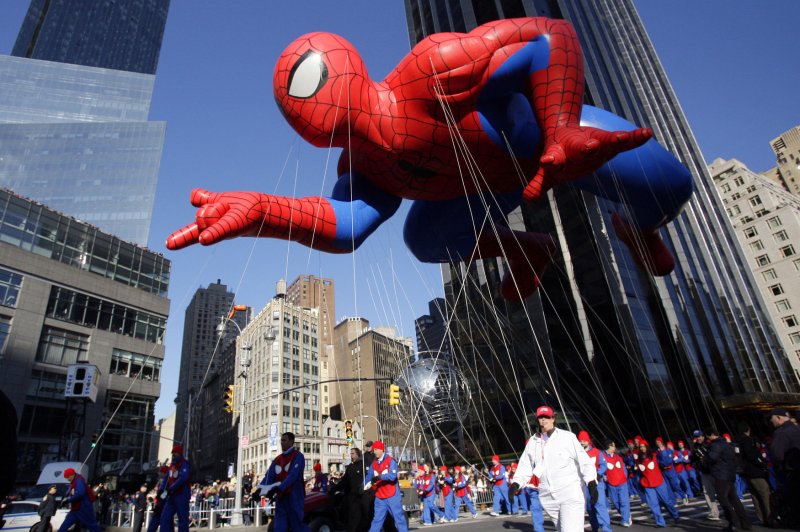The Spiderman Balloon floats down the parade route at the Macy's 86th Annual Thanksgiving Day Parade in New York City on November 22, 2012. UPI/John Angelillo |
License Photo
WASHINGTON, March 5 (UPI) -- Sure, Spiderman and his high-flying acrobatics are fantasy. But the superhero's preferred method of travel, via super strong, sticky silk thread, is at least modeled on mother nature -- on real science.
Scientists have long admired the strands of proteins released by arachnids to spin their prey-catching webs. Spiders weave these protein strands in a way that makes the threads five times stronger than steel, but still highly flexible.
Now, according to a new article in Chemical & Engineering News (C&EN) -- the weekly news magazine of the American Chemical Society -- scientists are closer than ever to replicating spider silk in synthetic form.
By inserting altered spider genes into the isolated DNA of everything from goats to alfalfa sprouts to bacteria, scientists are able to build mini protein-producing factories.
One company in Germany, AMSilk, says they're ready to scale their production process and move their products to market. AMSilk uses genetically engineered E. coli to express a variety of proteins similar to spider silk.
“This is scalable technology,” Managing Director Axel H. Leimer told C&EN. “If someone ordered 1 ton, we could make it. We have already made a half a ton." Leimer claims their products are as tough and strong as real spider silk.
Other smaller operations aren't far behind, but corporate chemical behemoths like DuPont and BASF have given up on producing synthetic spider silk after several years of expensive research.
Experts say synthetic spider silk could be used to create everything from bulletproof vests to medical products like artificial ligaments and suture threads.
Who knows? Maybe the super strong thread could inspire a real life Spiderman. After all, scientists say the scene in "Spiderman 2" where Peter Parker halts an out of control passenger train with several strands isn't exactly farfetched.
“We calculated roughly how thick the fibers were, how many of them he had attached to the walls, how much the locomotive and people weighed, and how fast it appeared to be going,” Randy Lewis, professor of biological engineering at Utah State University, told C&EN. “Spider-Man would have been able to stop that train.”
[Chemical & Engineering News]















